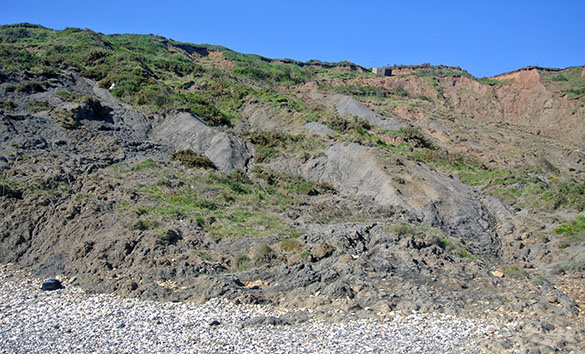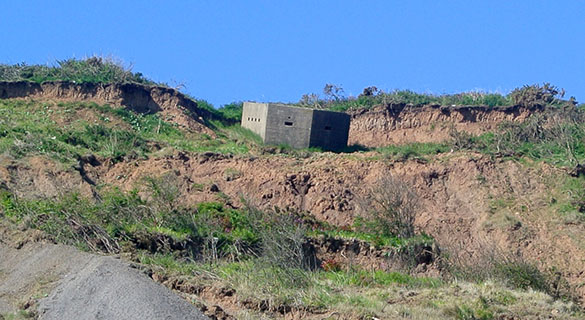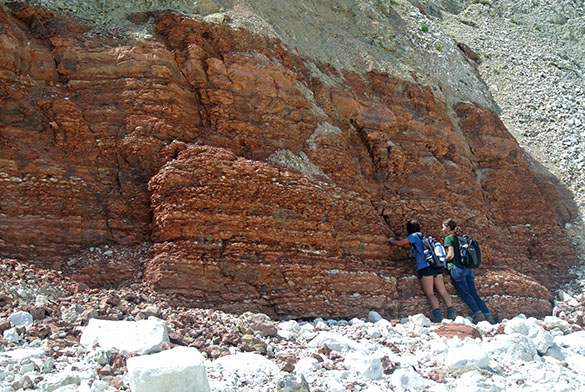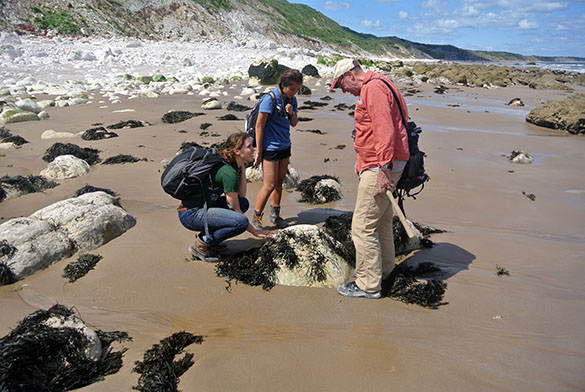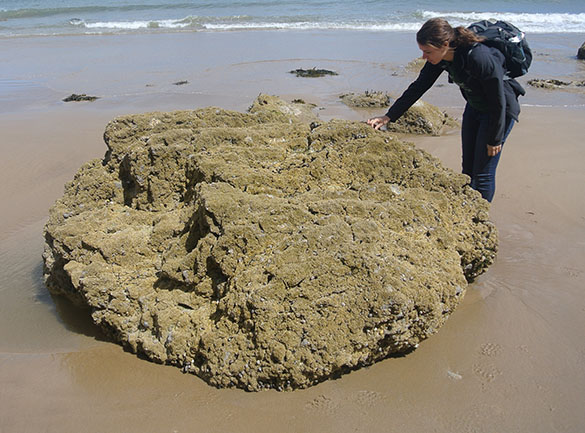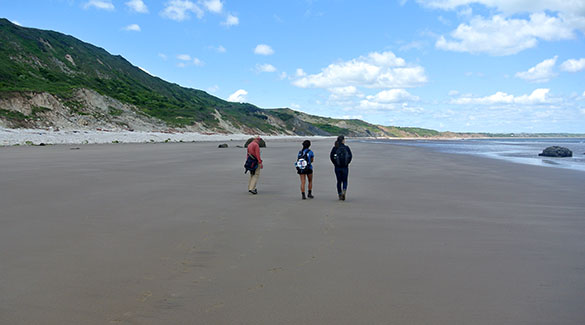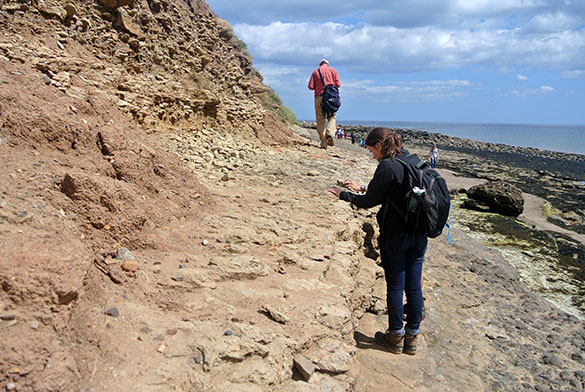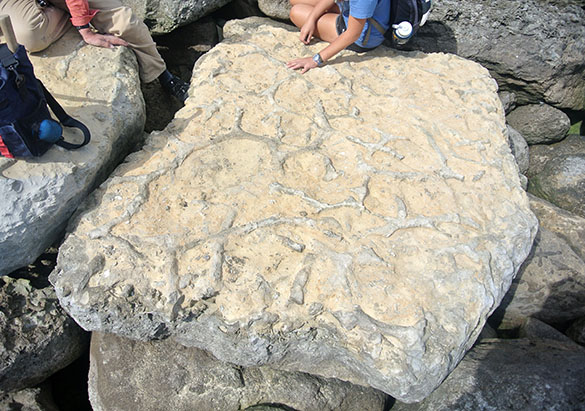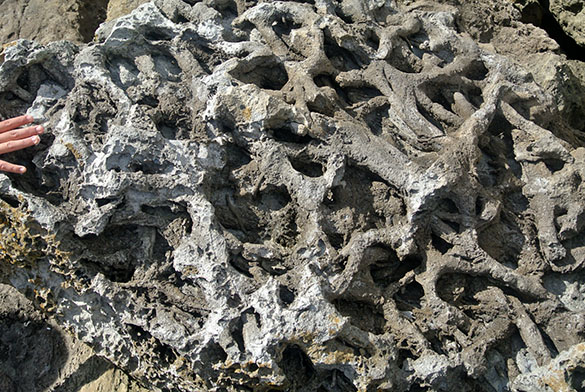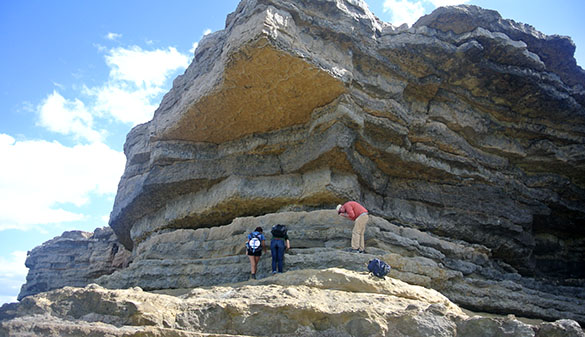 SCARBOROUGH, ENGLAND (June 9, 2015) — Team Yorkshire returned to the Speeton Clay today to begin the fieldwork for Mae Kemsley’s Senior Independent Study project. Mae chose to work on the incredible diversity of belemnites found in this Lower Cretaceous unit. There are two aspects to her study: the paleoecology of the belemnites themselves, and the taphonomy of their distinctive bullet-shaped calcitic rostra (guards). We hope that Mae will be able to do some stable isotope work to help elucidate the paleoenvironments these pelagic creatures lived in. Oxygen isotopes in particular may indicate the seawater temperatures when the belemnites were forming their skeletons. The Speeton Clay has faunas from alternating Boreal (northern, colder) and Tethyan (southern) regions, so this will be interesting.
SCARBOROUGH, ENGLAND (June 9, 2015) — Team Yorkshire returned to the Speeton Clay today to begin the fieldwork for Mae Kemsley’s Senior Independent Study project. Mae chose to work on the incredible diversity of belemnites found in this Lower Cretaceous unit. There are two aspects to her study: the paleoecology of the belemnites themselves, and the taphonomy of their distinctive bullet-shaped calcitic rostra (guards). We hope that Mae will be able to do some stable isotope work to help elucidate the paleoenvironments these pelagic creatures lived in. Oxygen isotopes in particular may indicate the seawater temperatures when the belemnites were forming their skeletons. The Speeton Clay has faunas from alternating Boreal (northern, colder) and Tethyan (southern) regions, so this will be interesting.
 Here is the Speeton Clay forming the Middle Cliff along the shoreline. Virtually every outcrop of this unit is slumped from above, so sorting out the stratigraphy is a challenge.
Here is the Speeton Clay forming the Middle Cliff along the shoreline. Virtually every outcrop of this unit is slumped from above, so sorting out the stratigraphy is a challenge.
 Here is Mae again working through a small patch of the Speeton Clay. There are four broad intervals of the unit (A, B, C, D) that we must recognize by the fossil content and the position of the outcrop relative to various field markers like abandoned pillboxes, breakwaters, and large rocks.
Here is Mae again working through a small patch of the Speeton Clay. There are four broad intervals of the unit (A, B, C, D) that we must recognize by the fossil content and the position of the outcrop relative to various field markers like abandoned pillboxes, breakwaters, and large rocks.
One of our intertidal landmarks is a set of boilers from the 1897 wreck of the SS Laura, an Austro-Hungarian cargo ship that ran aground near Filey Brigg. The heavy boilers have stayed in essentially the same place for over a century.
 The weather could not have been better today. We got Mae’s project off to a fine start with several sets of samples collected from the four primary units of the Speeton Clay.
The weather could not have been better today. We got Mae’s project off to a fine start with several sets of samples collected from the four primary units of the Speeton Clay.
Paul Taylor returned to his home in Epsom at the end of the day, leaving the three Americans to their own devices. He was essential in our first week, getting us oriented to the local geology, expertly driving us around to the various sites, and entertaining us with his trademark puns. He trained us well to carry on into week two of the Yorkshire Expedition.















